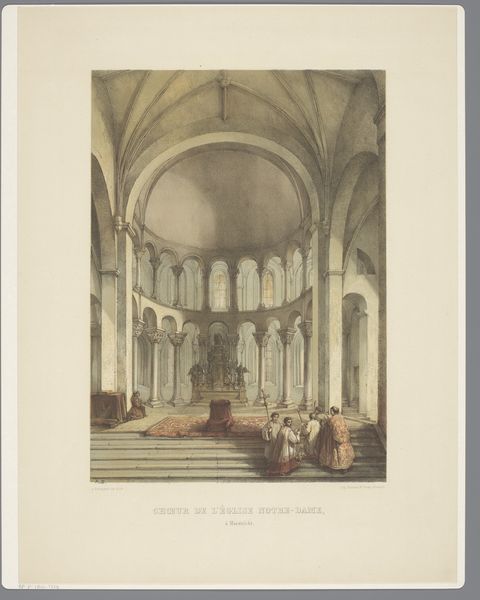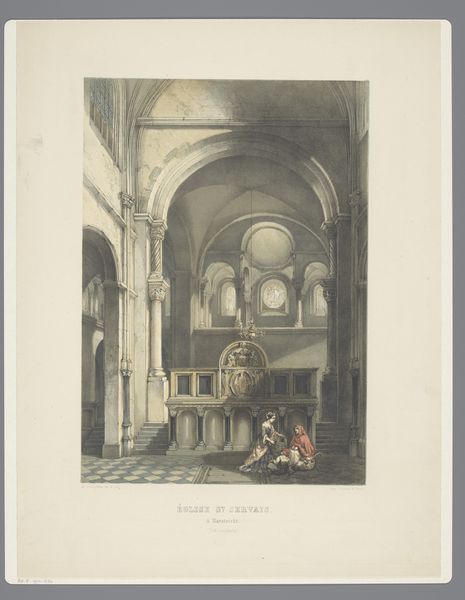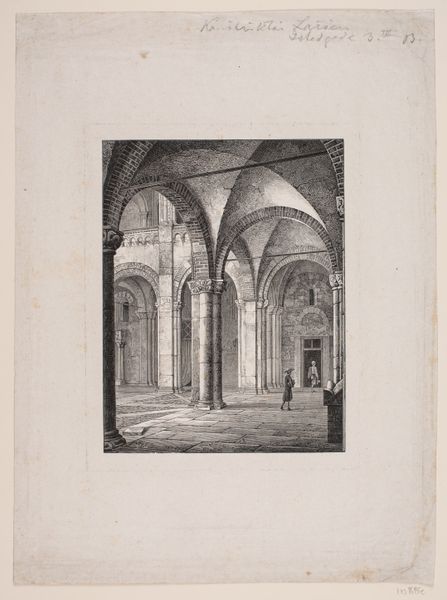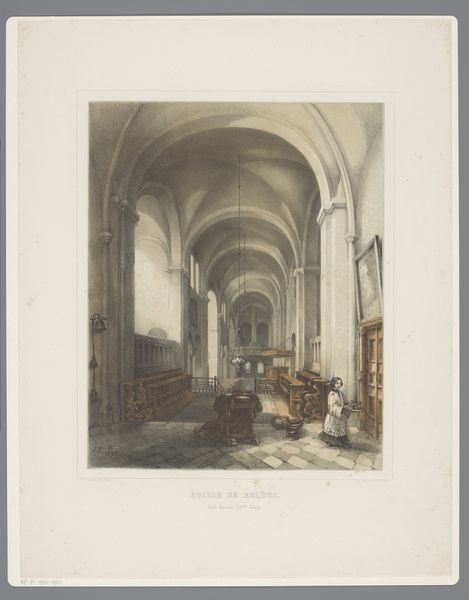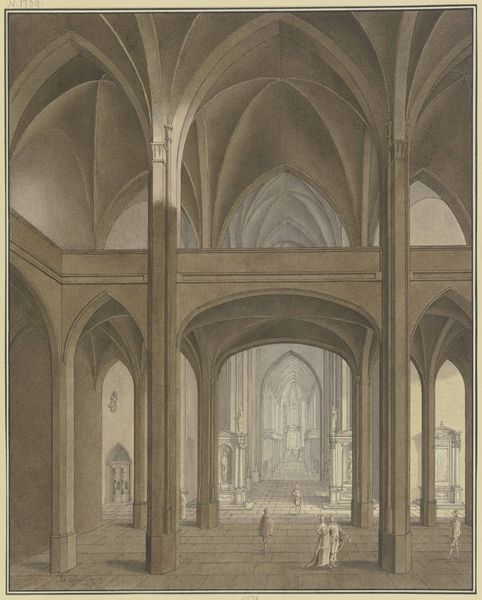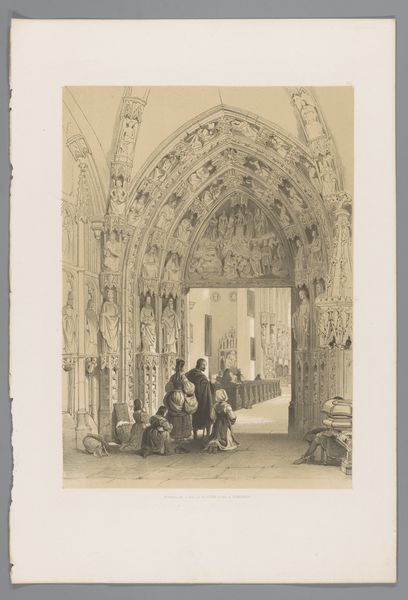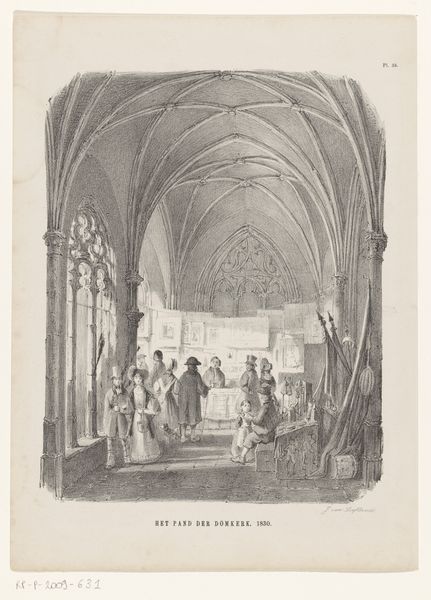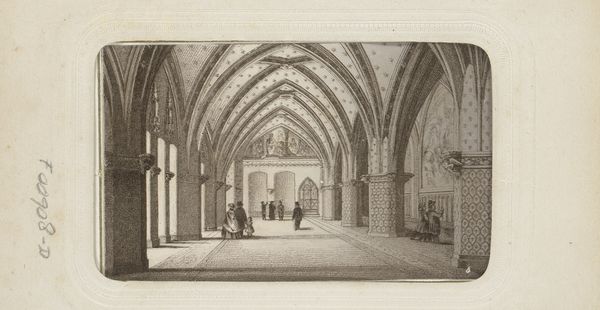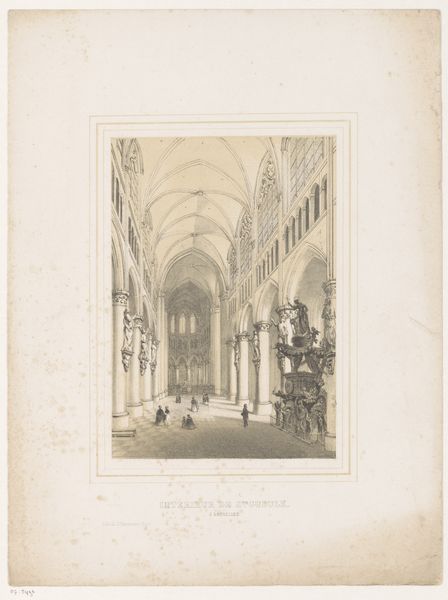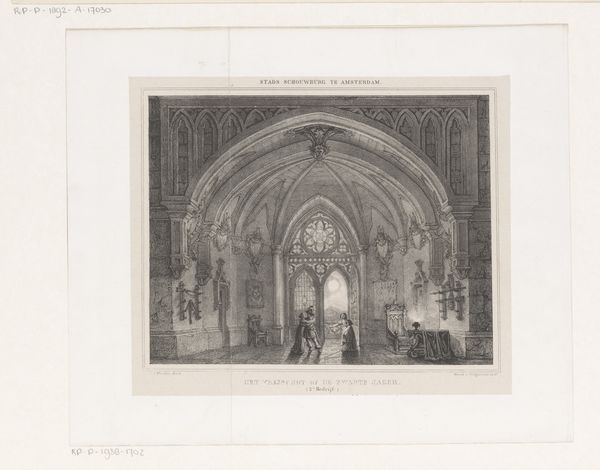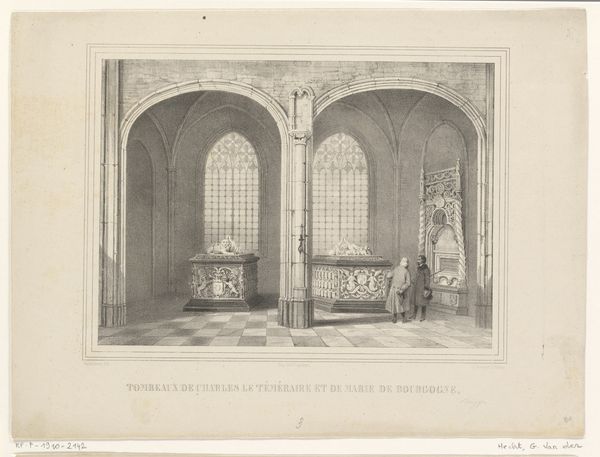
Dimensions: height 554 mm, width 423 mm
Copyright: Rijks Museum: Open Domain
Editor: We’re looking at "Bergportaal van Sint-Servaasbasiliek te Maastricht," a drawing from 1855 by Alexander Schaepkens, currently held in the Rijksmuseum. It depicts the entry to the Basilica of Saint Servatius, and my eye is drawn to the intricate carvings around the doorway. What strikes you when you look at this work? Curator: The portal, especially the careful depiction of figures, really focuses our attention. Note the light. It falls dramatically on the supplicant in the foreground, but it's dim and diffused as we look further back towards the door, obscuring the sculpted figures. It’s as if the artist suggests we only dimly perceive the cultural memory held in these places. How does that obscurity shape your understanding? Editor: It almost feels like a secret is being kept. I see the figures, but I can't quite make them out, as if time has worn away their meaning. What could these figures symbolize? Curator: Think of the context. Saint Servatius was a key figure in the history of Maastricht. Representing the sculptures like this—slightly worn, partially obscured— it emphasizes a sense of deep time, the weight of history, but also perhaps its potential to fade from collective memory. The image thus speaks to the constant negotiation between preserving and forgetting cultural touchstones. Do you see that reflected in the rendering? Editor: Yes, the Romantic style adds to that feeling. The artist isn't just showing us a building; they are evoking a mood, a sense of reverence for the past. I learned to really look closely at architectural prints, but also think about what meanings or memories are embodied in them. Curator: And consider how those memories evolve as time continues! Thank you for your insights.
Comments
No comments
Be the first to comment and join the conversation on the ultimate creative platform.
